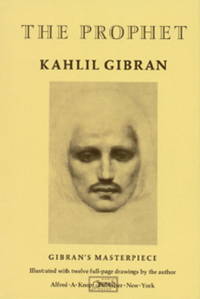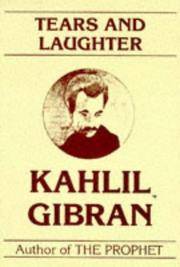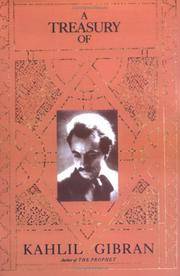My Soul gave me good counsel, teaching me that the lamp which I carry does not belong to me, and the song that I sing was not generated from within me. - Kahlil Gibran
Kahlil Gibran (1883 – 1931)
Gibran Khalil Gibran (January 6, 1883- April 10, 1931) was a Lebanese author, philosopher, poet and artist.
Kahlil's poetry is notable for its use of formal language and insights on topics of life using spiritual terms. He emigrated to Boston, USA in 1895 with his mother Kamilah, younger sisters Mariana and Sultana and half-brother Peter (aka Butros). He studied art in Boston, and French and Arabic in Lebanon. The spelling "Kahlil Gibran" is the result of a suggestion by his English teacher that he Anglicise his name to make it more acceptable in society.
Khalil Gibran grew up in the region of Bsharri in Lebanon. During his youth he did not receive any formal schooling since his family was poor, but he was visited regularly by priests who taught him about the Bible, the Syriac and Arabic languages. During his youth, his family's property was confiscated by the Ottoman authorities after Khalil Gibran's father was sent to prison for fraud and tax evasion. With no home, the Gibran family decided to follow Gibran's uncle and emigrate to the United States; they left for New York on June 25, 1895. Khalil Gibran's father had been released in 1894 but decided to stay in Lebanon.
Youth in America
At the time the second largest Lebanese community was in Boston's South End, and thus the Gibran family decided to settle in that area. Gibran's mother started working as a peddler to bring in money for the family, and Khalil Gibran started school on September 30, 1895. Because Khalil Gibran had no formal schooling in Lebanon he was placed in a special class for immigrants who had to learn English.
Cultural growth and works
In his early teens, the artistry of Gibran's drawings caught the interest of his teachers and he was introduced to the avant-garde Boston artist, photographer and publisher Fred Holland Day, who encouraged and supported Gibran in his artistic and cultural endeavors.
Gibran's first published works were drawings, which were used for book covers in 1898. His first art exhibition was held in 1904 in Boston. It was during this exhibition that Gibran met Mary Elizabeth Haskell, a respected headmistress ten years his senior. The two formed an important friendship that lasted for the rest of Gibran's life, and Haskell influenced not only Gibran's personal life, but his career as well.
In 1908 Gibran went to study art with Auguste Rodin in Paris for two years.
While most of Gibran's early writing was in Arabic, most of his work published after 1918 was in English.
Gibran's best-known work is The Prophet, a book composed of 26 poetic essays.
Juliet Thompson, one of Khalil Gibran's acquaintances, said that Gibran told her that he thought of 'Abdu'l-Baha', the divine leader of the Baha'i Faith, all the way through writing Jesus; The Son of Man, another book by Gibran, was also influenced by 'Abdu'l-Baha's personage.
Gibran died in New York City on April 10, 1931: the cause was determined to be cirrhosis of the liver, and tuberculosis. Before his death Gibran expressed the wish that he be buried in Lebanon and this wish was fulfilled in 1932 when Mary Haskell and his sister Mariana purchased the Mar Sarkis Monastery in Lebanon (Mar Sarkis and the Gibran Museum). He is probably the most famous Lebanese-American writer ever, and The Prophet remains widely popular, with certain passages being read at some weddings and christenings. Gibran's works were especially influential in the American popular culture in the 1960s. Many Americans have a misconception that Gibran is Muslim because of his Arabic name, which is actually a Christian-Arabic name. Much of Gibran's writings deal with Christianity, mostly condemning the corrupt practices of the Eastern churches and their clergies during that era.
"For years I knew of it's existance, a book called the "The Prophet " by Kahlil Gibran but for one reason or another I had never read it. When this artist portrait Contest came up I learned that Kahilil was also a visual artist. I picked up a copy of his word and was just in awe of his talent as a writer. His ability to take the written word and give it real and tangible substance. I realize what we try to do as visual artists to communicate,convey and share, Kahlil does with his prose. His writings are rich,elegant and painfully simple. I am a knew fan and wonder what took me so long!" - Alma Lee
* * * * * * * * * *
Books by Kahlil Gibran






























